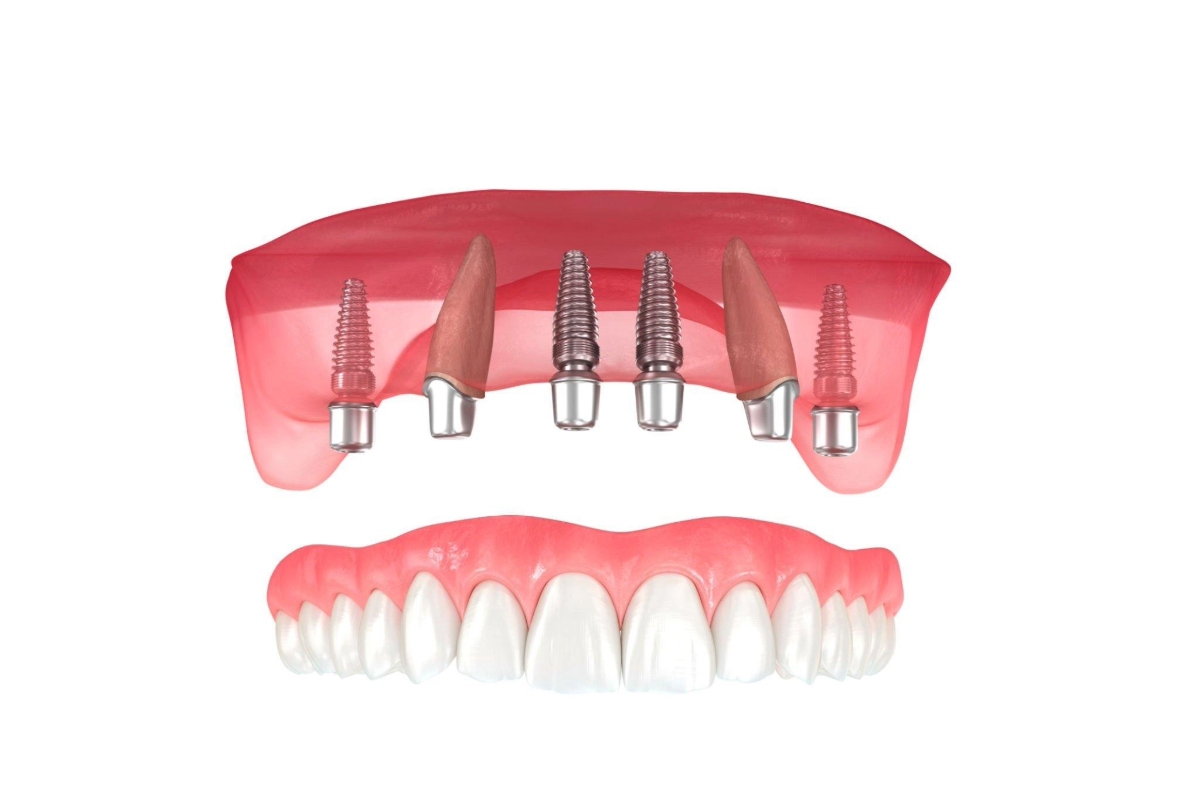Dental implants have become the gold standard for tooth replacement. They offer a permanent solution that looks and functions like natural teeth, helping to restore both aesthetics and functionality. This article explores the top 7 dental implant options available in 2025, with a focus on the different types of implants, their benefits, and their suitability for various dental needs.
1. Traditional Titanium Dental Implants
Traditional titanium implants are the most commonly used in the field of dentistry. Titanium is renowned for its strength, durability, and ability to fuse with the bone—a process called osseointegration. This ensures that titanium implants provide a stable and long-lasting solution for tooth loss.
Benefits:
- Proven Longevity: Titanium implants have a success rate of over 95% over 10-20 years, making them the most reliable option.
- Osseointegration: Titanium’s biocompatibility promotes bone healing around the implant, leading to strong, stable foundations.
- Versatility: Suitable for a wide range of tooth loss situations, from single implants to full arch replacements.
Drawbacks:
- Cost: Traditional titanium implants can be expensive, especially when factoring in the surgery and follow-up visits.
- Appearance: Although they function well, titanium implants sometimes lack the aesthetic appeal of newer materials like zirconia.
Best for: Patients looking for long-term durability and reliability.
2. Zirconia Dental Implants
Zirconia implants are a relatively new option, known for their all-ceramic composition. These implants are a great alternative for patients seeking a more natural-looking and biocompatible option. Unlike titanium implants, zirconia implants are made from a single block of zirconium dioxide, offering both strength and aesthetics.
Benefits:
- Aesthetic Appeal: Zirconia implants have a white, tooth-like appearance, which makes them ideal for the front of the mouth where visibility is important.
- Biocompatibility: Being ceramic, zirconia implants have a reduced risk of allergic reactions and are often chosen by patients with metal sensitivities.
- Minimal Inflammation: The material tends to cause less inflammation around the gums.
Drawbacks:
- Cost: Zirconia implants tend to be more expensive than traditional titanium implants.
- Brittleness: While strong, zirconia implants are not as durable as titanium and may be more prone to fractures under extreme pressure.
Best for: Patients with metal sensitivities or those seeking a more natural aesthetic.
3. All-on-4 Dental Implants
All-on-4 is a type of implant-supported denture system that replaces a full set of teeth on the upper or lower jaw using only four implants. This approach is highly effective for patients who have lost most or all of their teeth.
Benefits:
- Less Invasive: Fewer implants are required, making the procedure less invasive and reducing recovery time.
- Immediate Function: In many cases, the implant procedure can be completed in a single day, providing immediate function with temporary teeth.
- Cost-Effective: The All-on-4 system reduces the need for multiple implants, making it a more affordable option compared to traditional full-arch implant solutions.
Drawbacks:
- Not for Everyone: Ideal for patients with good bone density; those with significant bone loss may require bone grafting or a different approach.
- Limited Customization: While effective, the prosthesis may not offer the same level of customization or aesthetic appeal as single-tooth implants.
Best for: Patients with extensive tooth loss who are looking for a quick, cost-effective solution.
4. Mini Dental Implants
Mini implants are a smaller, less invasive version of traditional dental advice implants. They are used for patients who may have insufficient bone density or those who are looking for a less invasive and more affordable solution.
Benefits:
- Less Invasive: The smaller size and less invasive placement make mini implants ideal for patients with limited bone density.
- Faster Healing: Because they require less bone removal and manipulation, mini implants tend to have quicker healing times.
- Affordable: They cost significantly less than traditional implants, making them a good option for budget-conscious patients.
Drawbacks:
- Less Durability: Mini implants may not be as strong as full-sized implants and are more prone to wear and tear over time.
- Limited Use: Not suitable for all types of tooth replacement, particularly for full-arch restorations.
Best for: Patients with less bone density or those seeking a lower-cost option for replacing individual teeth.
5. Immediate Load Implants
Immediate load implants, also known as “same-day implants,” are designed for patients who need their implants to be functional right after the procedure. This type of implant allows for a temporary tooth restoration to be placed immediately, offering the benefit of not waiting for the implant to integrate fully with the bone.
Benefits:
- Immediate Function: Allows for the placement of a temporary crown or bridge immediately, reducing the wait time for a permanent prosthesis.
- Reduced Treatment Time: The treatment can be completed in fewer visits, which can be a huge benefit for busy patients.
Drawbacks:
- Not for Everyone: This type of implant is suitable only for certain candidates with healthy bone and gums.
- Potential for Failure: Because the implant is subject to loading before osseointegration is complete, the risk of implant failure is slightly higher.
Best for: Patients in need of immediate restoration and those with sufficient bone quality.
6. Bone-anchored Dental Implants (BAIs)
Bone-anchored dental implants are similar to traditional implants but are designed specifically for patients who have experienced significant bone loss. BAIs are anchored into the bone and are commonly used for patients who have had periodontal disease or severe tooth loss.
Benefits:
- Ideal for Severe Bone Loss: BAIs are ideal for patients with significant bone loss where traditional implants would not be feasible.
- Stability: The implant provides a solid foundation that prevents the prosthesis from shifting.
- Minimally Invasive: The procedure is less invasive compared to bone grafting surgeries.
Drawbacks:
- Surgical Complexity: The procedure may be more complex than traditional implants and requires specialized knowledge and training.
- Extended Healing Time: Bone integration can take longer compared to traditional implants.
Best for: Patients with severe bone loss who need a specialized solution for tooth replacement.
7. Hybrid Dental Implants
Hybrid dental implants combine the benefits of both titanium and zirconia implants. This type of implant uses a titanium base with a zirconia crown to give patients the best of both worlds: the strength of titanium and the aesthetic appeal of zirconia.
Benefits:
- Durability and Aesthetics: The titanium base provides strong support, while the zirconia crown offers a natural-looking, tooth-like appearance.
- Enhanced Biocompatibility: The combination of titanium and zirconia reduces the risk of allergies and improves the body’s response to the implant.
- Versatility: Hybrid implants are suitable for both single-tooth replacements and full-arch restorations.
Drawbacks:
- Cost: Hybrid implants are generally more expensive than traditional implants due to the combination of materials used.
- Complexity of Procedure: The procedure may require more time and effort to place, increasing the overall treatment time.
Best for: Patients seeking a combination of strength, aesthetic appeal, and biocompatibility.
Conclusion
Selecting the right dental implant depends on various factors, including the extent of tooth loss, bone density, aesthetic preferences, and budget. Traditional titanium implants remain the most reliable and widely used option, while newer alternatives like zirconia, All-on-4, and mini implants offer unique advantages for specific patient needs. Immediate load implants and hybrid options provide faster results and better aesthetics, while bone-anchored implants serve those with significant bone loss.
Ultimately, consulting with a qualified dental professional is crucial to choosing the implant that best aligns with your needs and expectations. Whether you’re looking for long-term durability, an aesthetic solution, or a quick restoration, there’s a dental implant option that can help restore both the function and appearance of your smile.




